From hobby to business: Tips for baking in bulk
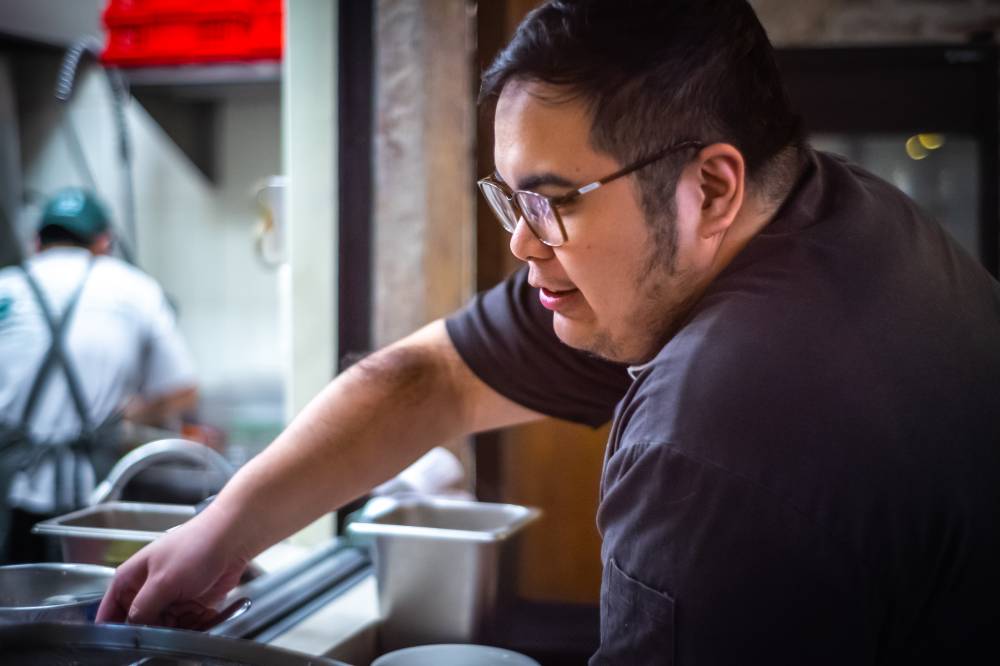
The pandemic—and the free time it suddenly afforded everyone—inspired many to finally pick up a hobby they had been putting off for too long. Baking was one of the most popular choices. For a while, you couldn’t scroll through your social media feeds without seeing posts about ube cheese pandesal or sourdough bread.
In time, the novelty wore off as things started to go back to the way they were. But while some people’s interest in baking inevitably faded, there were others whose passion for the craft only grew stronger—so much so that they ended up turning what supposedly was a mere pastime into a full-fledged business.
In making that transition, it immediately becomes apparent that baking for personal pleasure isn’t the same as baking in large batches or bulk.
Breaking news: Baking is hard labor. And if you find yourself trying to knead dough and mix ingredients in quantities you aren’t used to, it can get pretty overwhelming.
If you’re serious about baking and improving your skills, investing in quality equipment—like a high-capacity mixer—is always a good idea early on in your journey, chefs say, because they ultimately pay for themselves.
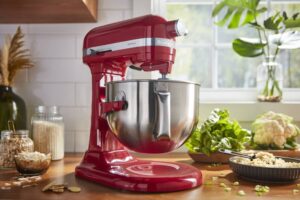
“It’s a long-term investment … If you do everything by hand, or mano-mano, you end up spending time and energy that you could use elsewhere. And time management is important when baking in large quantities,” Paolo Galang, head baker of the brunch cafe Maker and Made, told Lifestyle at the launch of appliance brand KitchenAid’s new 6QT commercial stand mixer.
Before becoming resident chef for KitchenAid, Pibo Bagadion used to work for a bakery, where he had to produce 1,000 pieces of pandesal every day. If only he had the ability to grow an extra pair of hands back then, Bagadion jokingly told Lifestyle. “A lot of people don’t realize that baking is hard work. It can really get physically taxing. I used to dread kneading pandesal dough!” he said, laughing.
The new mixer has a 5.6-liter capacity, which means it can hold 14 cups of flour, or knead dough enough for about 13 dozen cookies in one go. “If you get several orders, it will take you a long time to do them if you bake only in smaller batches. That can eat up your entire day,” Bagadion added.
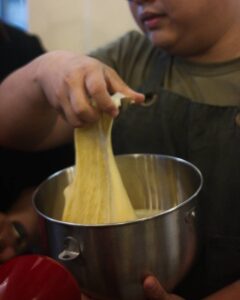
Time is of the essence
Quantity, however, isn’t the only aspect you have to consider when working with big batches of baked goods. You also have to act fast, lest the dough loses moisture, or gets over-proofed after sitting too long. You have to be wary of rises in temperature, so you don’t overheat or kill the yeast. And it goes without saying that when scaling up, recipe measurements demand utmost accuracy.
It is said that baking is an “exact science.” Follow the steps, ratios, and ingredients list to a tee, and the recipe will turn out exactly the same every time. The bigger the batch, the more accurate your weights and measures should be. Otherwise, the potential food waste could be just as substantial.
“Baking is not like cooking where you can add and edit stuff as you go along. If you go overboard with one ingredient, it will affect the product. And more often than not, there will be no way to reverse it,” Bagadion pointed out. “The math should always be accurate. If you increase the amount of the ingredients, make sure you get the proportions right.”
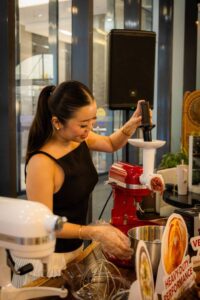
Proofing, a crucial phase in which yeast in the dough is allowed to ferment, determines a bread’s rise, texture, and flavor. While proofing bigger batches of dough isn’t necessarily harder, it can be still tricky. All things equal, larger masses are better at retaining heat, which, in turn, accelerates fermentation. So, if you don’t finish shaping the dough quickly enough, you run the risk of over-proofing it while you work on it. And you don’t want that unless you want your bread to collapse inside the oven.
“That’s why if you’re going for a bigger batch, I suggest that you chill your ingredients first—the milk, the water, the eggs, even the flour, if you can—everything from the fridge just to be safe. Because if your dough becomes too hot, it won’t open up or rise the way you want it,” Galang said.
Using a wider bowl also helps, he added, because it gives the dough more “wiggle room.” “That way, you lessen friction and lessen the heat,” he said. “You also have to remember that we live in a hot and humid country. While the recipes are exact, external variables can also come into play.”
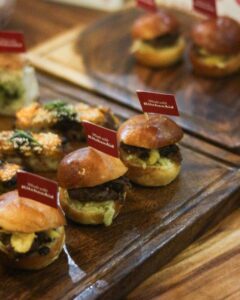
Multiple cakes
A similar principle applies to baking multiple cakes. If you let the mixture sit for too long, the resulting cake won’t be as light and airy. What good is having multiple pans of batter if you don’t have the oven space for them? That’s why every batch in the kitchen should be well-coordinated and ready to go, said Aegyo Cakes cofounder Koleen Chua Yap.
“You have to bake the batches you made right away. Even if you aerated the batter well, the cake base could still sink if you wait too long. You have to plan ahead and make sure that you have your cake pans all prepped, that you have enough space in your oven. When dealing with bigger batches, you have to be faster, more intentional with your steps,” Yap told Lifestyle. “We even time our tasks and movements.”
But more than easing your workload, having a good mixer can also expand the breadth of what you can do as an aspiring baker. Breads rich in sugar and fat, like brioche and shokupan (Japanese milk bread)—whose sticky dough requires slow, prolonged kneading to develop its gluten and fortify its structure—becomes more doable at home. The same goes for such sweets as meringue, genoise, and souffle, which can be quite the workout to whip up without the aid of electric tools.
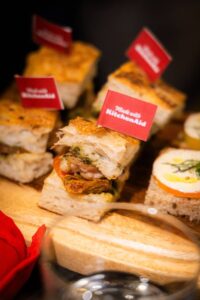
With its new, half-speed setting, the 6QT mixer mimics the act of folding, allowing the user to introduce delicate ingredients, like small fruits, into a stiffer mixture without crushing them. And with its range of attachments, the mixer can also be used as a pasta roller, meat grinder, and ice cream maker.
In fact, the dishes served at the product launch were all made using the mixer, the better to illustrate its features and capabilities. There were sliders with brioche buns and beef patties, churros with whipped ricotta and blueberry, spicy prawn toasts, bruschetta with tomato and stracciatella, and focaccia with chicken pesto.
Of course, having nice, commercial-grade equipment won’t turn you into an expert overnight, and have you churning out trays upon trays of goodies without breaking a sweat. But they can be worthwhile companions in the never-ending journey of learning and trial-and-error that is baking. And this is especially true for those who aspire to earn a living out of their passion.
“Read books, take up classes if you can. You just have to continue learning,” Bagadion said.
“Don’t be afraid to make mistakes. That’s how you gain experiences. Yes, we have to follow instructions, but it’s not all there is to baking. We also have to know how the dough is supposed to feel, how things are supposed to behave and react with each other,” Galang added. “It’s all part of the process.”

















